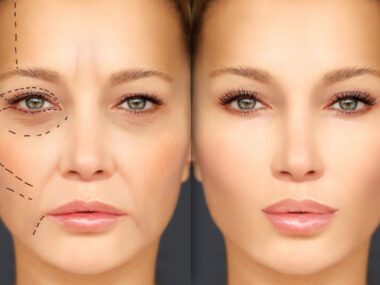Glaucoma is a group of eye conditions that can lead to damage to the optic nerve, often due to increased intraocular pressure (IOP). It is a leading cause of irreversible blindness worldwide.
Glaucoma usually progresses slowly, and vision loss may not be noticeable until the disease has reached an advanced stage.
Types of Glaucoma
- Open-Angle Glaucoma: This is the most common type of glaucoma. It develops gradually as the drainage angle of the eye becomes less efficient over time, leading to increased IOP. Open-angle glaucoma often progresses slowly and may not cause noticeable symptoms until it’s advanced.
- Angle-Closure Glaucoma: This type is characterized by a sudden blockage of the drainage angle within the eye, leading to a rapid increase in IOP. Angle-closure glaucoma is considered an emergency and requires immediate medical attention.
- Normal-Tension Glaucoma: In this form of glaucoma, damage to the optic nerve occurs even though IOP is within the normal range. The exact cause is not fully understood, but it may be related to reduced blood flow to the optic nerve.

Causes
- Elevated intraocular pressure (IOP) is a major risk factor for glaucoma, but not everyone with high IOP develops the condition.
- Other risk factors include genetics, age (glaucoma is more common in older adults), family history, certain medical conditions (e.g., diabetes, hypertension), and use of corticosteroid medications.
Symptoms
- Glaucoma often develops slowly and may not cause noticeable symptoms until peripheral vision is significantly affected. Common symptoms may include:
- Gradual loss of peripheral (side) vision
- Tunnel vision in advanced stages
- Halos around lights
- Blurred vision
- Severe eye pain or headache (a sign of acute angle-closure glaucoma)
Diagnosis
- Glaucoma is diagnosed through comprehensive eye exams, which may include measuring IOP, assessing the appearance of the optic nerve, checking peripheral vision (visual field test), and assessing the drainage angle of the eye.
- Early detection and regular eye exams are critical because glaucoma can progress without symptoms.
Treatment
- The primary goal of glaucoma treatment is to lower IOP and prevent further damage to the optic nerve. Treatment options may include:
- Eye drops: Medications that reduce IOP.
- Oral medications: In some cases, oral medications may be prescribed.
- Laser therapy: Procedures like laser trabeculoplasty or laser iridotomy can improve drainage or create a hole in the iris.
- Surgery: In severe cases, surgical procedures can improve drainage and reduce IOP.
Prevention
- While glaucoma cannot always be prevented, regular eye exams are crucial for early detection and treatment.
- Managing underlying medical conditions like diabetes and hypertension can help reduce the risk.
- Protecting your eyes from injury is also important.
Impact
- Glaucoma is a leading cause of blindness worldwide, and vision loss due to glaucoma is irreversible.
- Early diagnosis and treatment are key to preserving vision and preventing further damage.
Lastly, glaucoma is a group of eye conditions that can lead to optic nerve damage and vision loss, often due to elevated intraocular pressure.
Also, it is a serious eye disease that requires early detection through regular eye exams and appropriate treatment to prevent irreversible vision loss.
If you have risk factors for glaucoma or notice any changes in your vision, it’s essential to seek the advice of an eye care professional.










